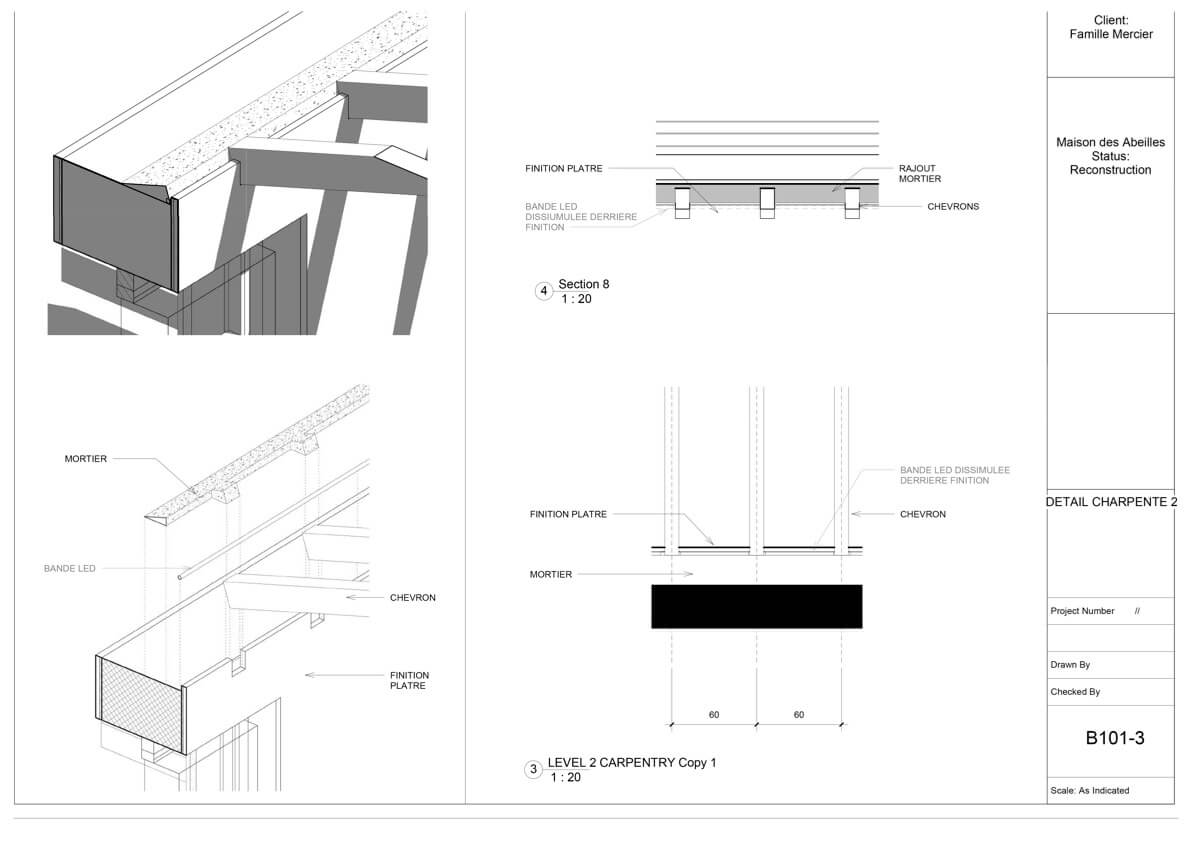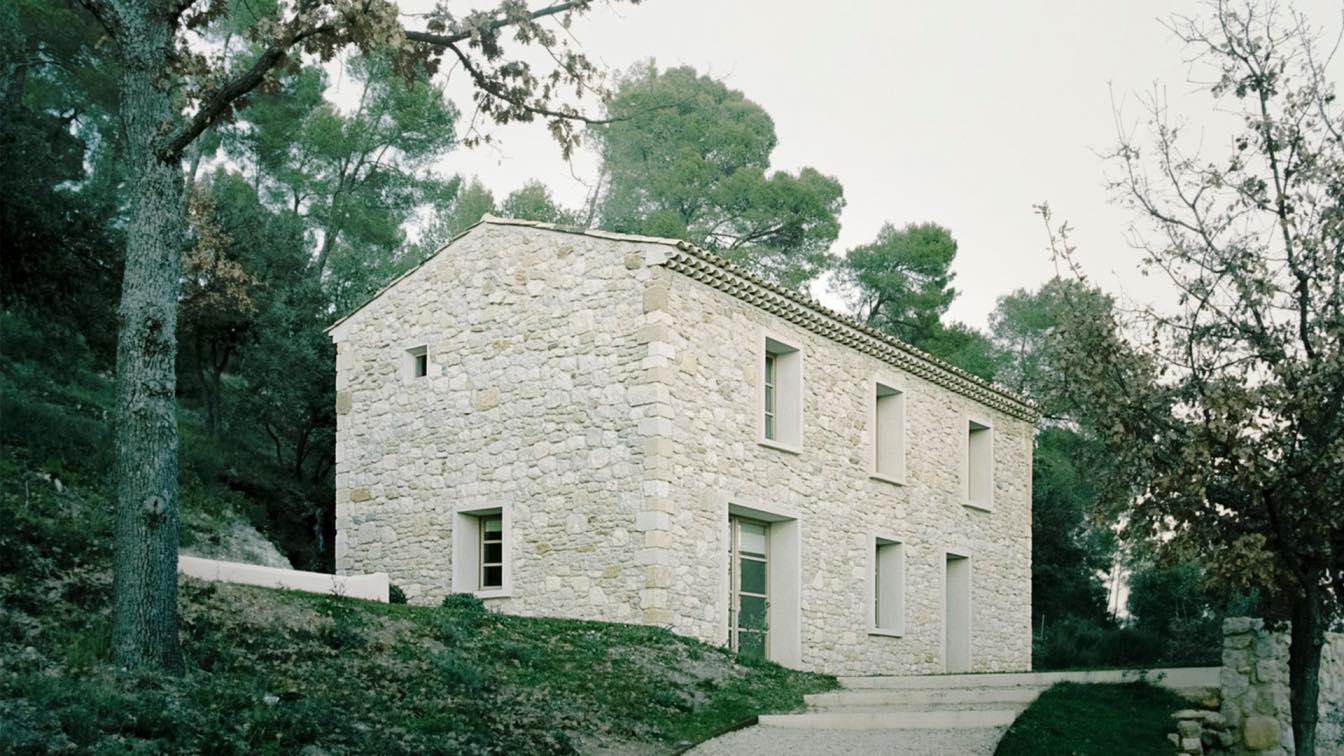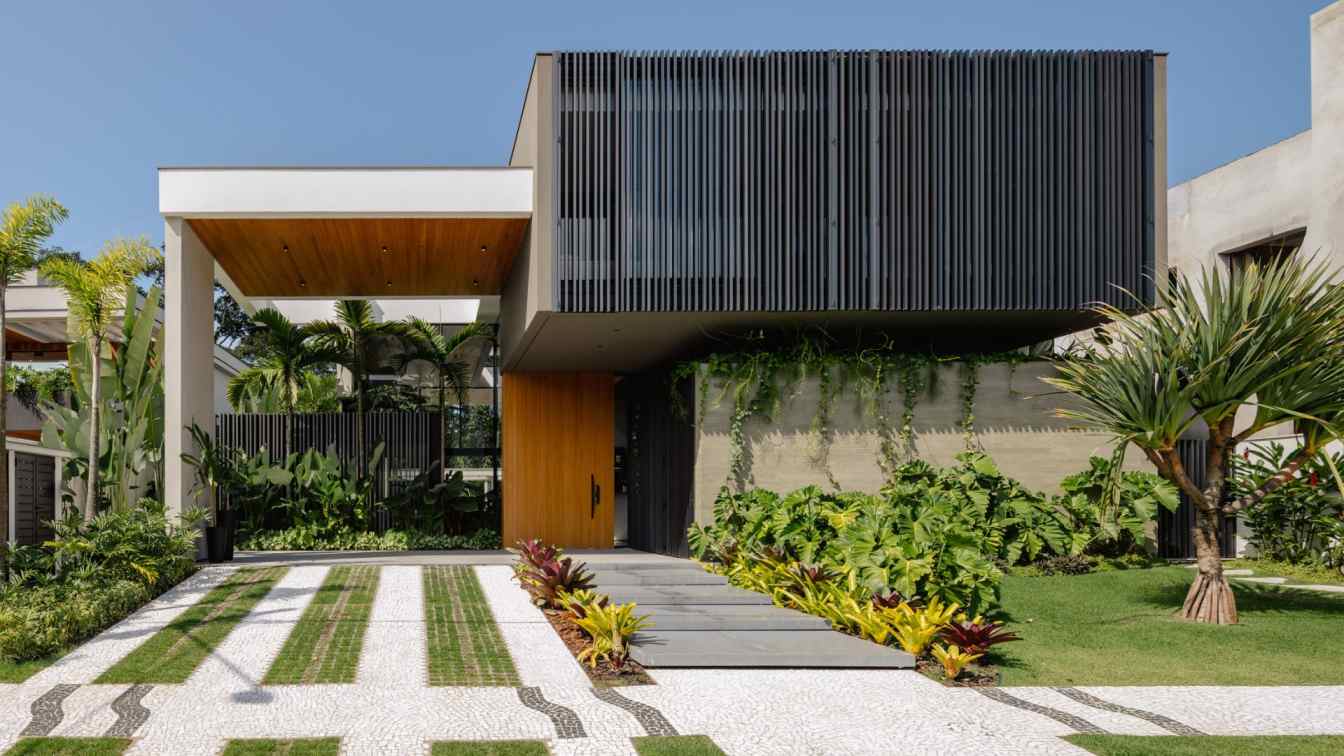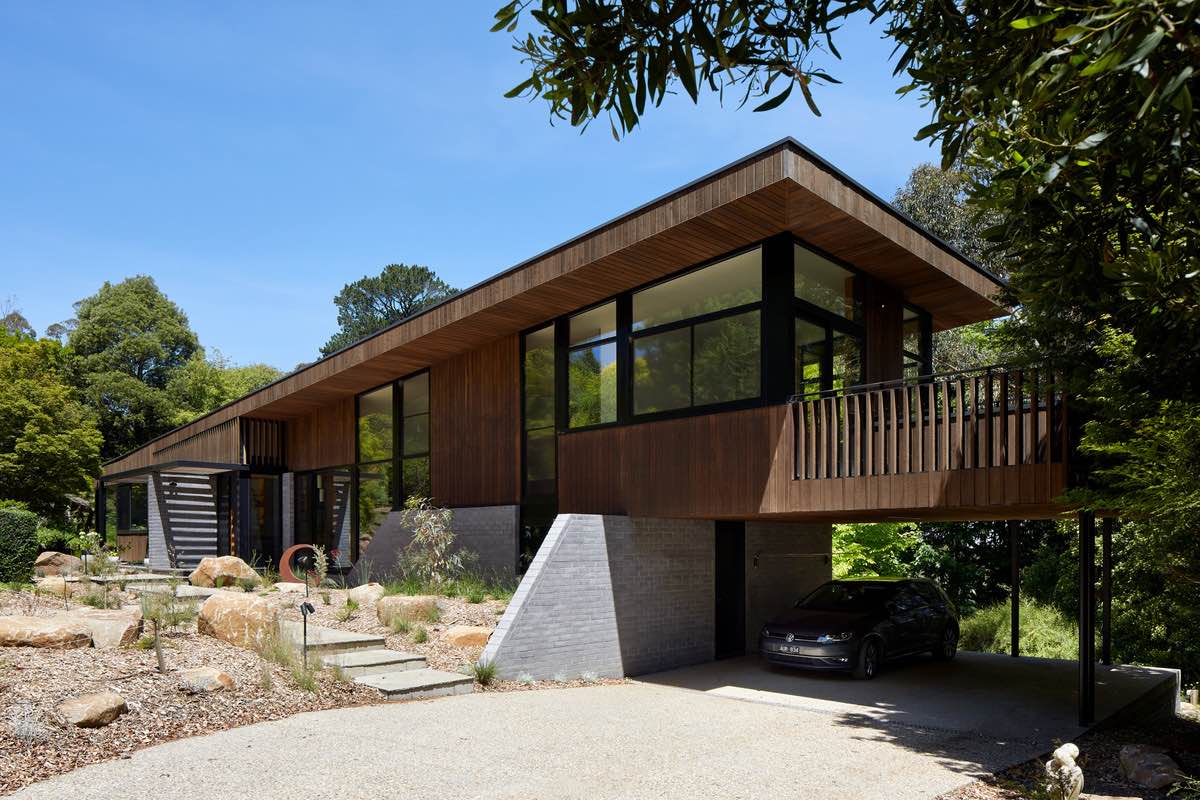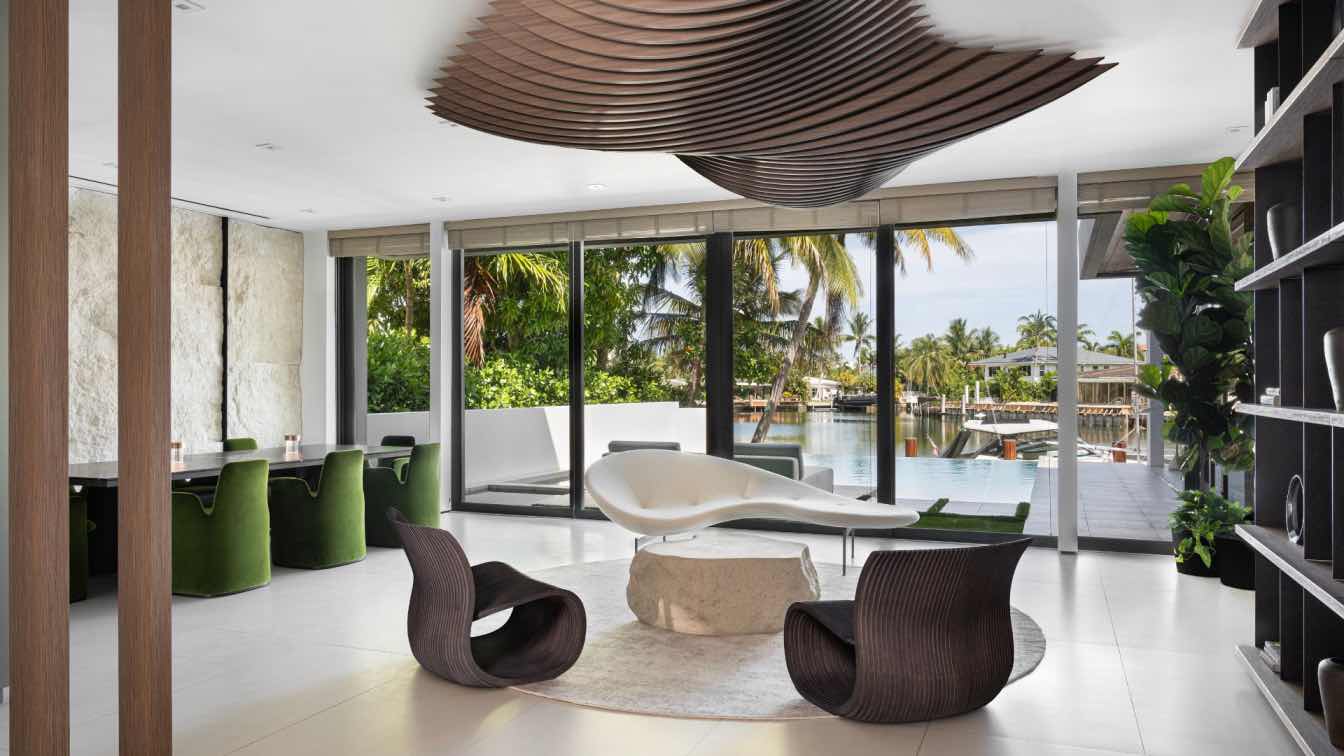Studio XM: The Story
My family bought land in South of France’s Vaucluse department in the early 2000s. At the time, a small farmhouse sitting in the forest nearby had been weathering away for more than a decade. It stood on its hill, fading comfortably into the landscape.
When my parents approached me to rebuild it we were sitting within eye-sight of the dilapidated structure. It was still soft in its ruinous state, a reminder of the qualities of its surroundings. We had spoken about the project before but the timing had not been right. That summer, and throughout the two years that followed, I worked to bring it back to life – infusing it with the monastic qualities that make this valley so special.
The Architecture
Respectful of its surroundings the house was designed to be an intimate refuge buried in the hills – one that would respect the site and the architectural history of the region. It sits at the base of a small, tree-covered hill in the middle of the French country-side. When summer comes around it progressively nestles itself in the forest, without ever losing views of the vineyard below.
The existing structure was carefully dismembered in phases. The footprint and envelope were revised but stayed very much in keeping with the proportions of the old farmhouse. More than a simple reconstruction, this house was imagined as a renewal, emphasizing the house’s quirks and lending voice to careful craftsmanship. We took cues from surrounding architecture and amplified them. Most walls are finished with “chaux”, a local lime plaster that leaves the surface textured and uneven. The casework was drawn plainly and is almost entirely carved from regionally sourced oak. The tiles on the roof are “tuiles anciennes”, some more than 30 years old, ranging in color from green to red.

1. What were your parent's main goals for the guest house? What is their background/how are their personalities shown in the project?
My parents had planned to build a semi-independent guest house on the property. As time went on, the house grew a little bigger and we decided to make it entirely self-sufficient.
If my mother’s personality can be found in some elements of the house, my father’s personality is visible in the process.
My mother has managed many interiors and architectural projects in the past. Some for her own firm, others for highly distinguished companies. She had incredible taste and definitely knows a thing or two about how to organize space. She now runs Insight School of Design in Hong Kong and was instrumental in many conversations about materials, texture, furniture and colors in the house. We communicated very closely during the entire project – and her aesthetic is very much part of the house.
My father has a very different background. He was a telecom engineer before becoming an entrepreneur, and now leads Ascender Capital, a value-oriented investment firm based in Hong Kong. He is the perfect partner to have when discussing planning, execution and communication. And by perfect I mean horrible – he will not let anything go without a good reason. Without him the project would have suffered from many inefficiencies.

2. Were there any pain points as you completed the project? How did the process of construction affect the final result? Did you make any changes throughout the process?
The construction process is always filled with surprises – although this particular one was relatively smooth. We revised the extrusions around the windows a handful of times. I even had a full one done on the Southern façade before tearing it down. Proportions are important.
We worked with local companies and craftspeople, which definitely affected the final result. Every stone was cut by hand, which gives all four sides of the house a distinct texture. The casework inside was custom made by a local artisan and his four sons. Every element was discussed and most conversations happened on site. Full immersion.

3. What were the main project goals? How did you meld your minimalist aesthetic with the lush French countryside?
The site itself is very intimate. The house sits at the base of a small, tree-covered hill in the middle of the French country-side. When summer comes around it gets progressively nestled in the forest, without ever losing views of the vineyard below.
I decided early-on to infuse the house with the monastic qualities of its surroundings. It had to be a spectacle, but a discrete one. We took cues from surrounding architecture and amplified them. Most walls are finished with “chaux”, a local lime plaster that leaves the surface textured and uneven. The casework was drawn plainly and is almost entirely carved from regionally sourced oak. The tiles on the roof are “tuiles anciennes”, some more than 30 years old, ranging in color from green to red.
The project tried to stay clear of fuss and clutter - flexible and open to people’s interpretation of intimacy.

4. What is your favorite part about the finished project? What makes this project special, architecturally, process-wise, or general story?
It was very special for me to be working somewhere I had spent most of my summers as a child. I knew the grounds well, and I visited the construction site many times. Now that it is finished I stay there often when I visit family. For that I am truly lucky. Not a lot of architects can live in the spaces they design for others – and there is so much to learn from it.
Another aspect that made this project interesting is how closely I worked with my mother. We were far but still communicated regularly, and every conversation helped move the project along.
5. In the project description you mention that the footprint of the house was revised – what changes did you make?
The footprint and envelope of the house were only slightly revised. We added 1.5m in length and 0.5m in width to the footprint - both floors have the same perimeter. The height was then reconsidered for reasons of comfort and proportion. We extruded the walls an additional one meter.

6. Did you keep any elements from the original house structure?
The walls of the house are entirely made of stone, constituting at once the facade and the interior finish. We decided that in this climate, insulation would not be an issue. 15% of those stones are from the original house. We dismantled the existing structure looking out for those rare elements, which were then added to the masonry once the foundations were poured.


















